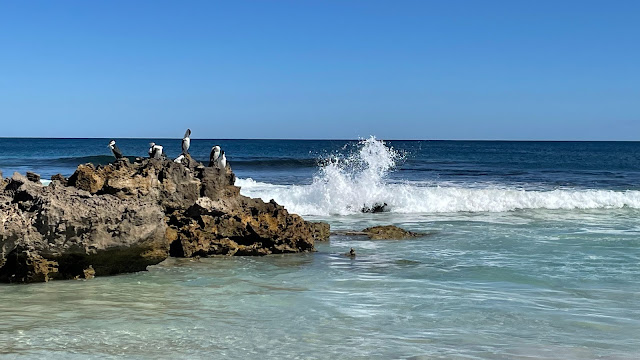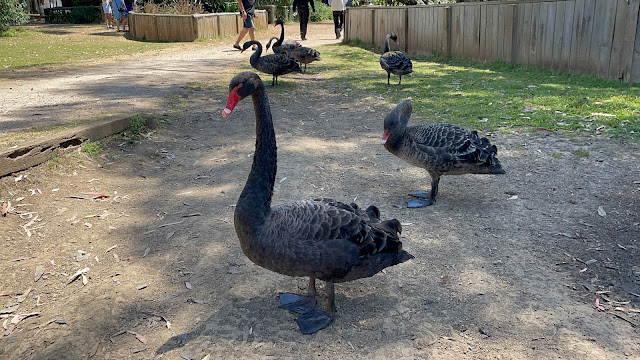Birds
One of the things I notice most here is the sound of the birds. Sometimes I just record their sounds so I'll be able to play it again when we have to leave hear here. Australia has more endemic bird species than any other country on earth. There are 21 species of robins, and 56 species of parrots! And lest you think the color colour pink is just for ladies, it's only the male Pink Robin that sports that awesome color.
Unless stated, I have taken all of these photos. Not that the photography is amazing, but I've actually seen all of these birds myself. At the end of this post is a video of most of these birds in action, and some of their sounds.
This is the kookaburra. They look pretty serious but make a distinct laughing sound that sort of sounds like a monkey. You can hear this call in the video.
These stunning rainbow lorikeets hang out in large flocks in the park near Henry's school. I also found a lot of them in a tree across from the temple and got close enough to take a picture of one. They make a pleasant chirping sound, so many of them all together in one tree sounds intense!
(You can hear that in the video)
The magpies make a sound like a dove coo that has been synthesized. Magpies are not adorable and dive or attack your head often in the spring during their nesting season. This guy came after me on a walk and was staring me down.
I think this Willy Wagtail is my favorite. He usually visits our backyard in the morning. And evening. Every time it lands it wiggles, or "wags," it's tail feathers once to each side. It seems to use that tail to fly eradicatally to catch bugs in midair. It makes a cute mechanical chirp that sounds like a toy being wound (that wakes me up in the morning).
I found a report of a rare white Willy Wagtail. That would be really fun to see!
The cockatoos make a very loud "squawk" but without the "squ-" or the "-k." They fly overhead in huge flocks in our neighborhood and settle in the park.
Henry and Allen made friends with the sulphur-crested cockatoos back at Christmastime.
This is a Red-tailed Black Cockatoo. They are a threatened species. They feed on banksia trees and nest in high hollow trees, but their habitats have been destroyed by humans for agricultural fields. The birds are desperate for food so they stay near the roadways where some of the only remaining trees are. Grain trucks also don't cover their loads and spill a bit on the roadsides that the birds will come down to eat. But this proximity to the roads means one of their leading causes of death is being hit by a car. Other birds get more desperate and feed on fruit orchards, so the farmers shoot them. The future doesn't look good for this lovely bird.
We visited a Black Cockatoo Reserve on Henry's birthday. This is him meeting a bird also named "Henry." We were able to get a certificate adopting the bird Henry for a year, starting on the human Henry's birthday.
We often see these galahs that have a nice grey and pink color. They are actually a type of cockatoo, as you can see this guy is able to poof his head feathers. "Galah" is pronounced, "guLAH."
Gang-gang Cockatoo
My least favorite bird is the raven. It sounds like an annoyed teenager who's been asked to come to family game night. It is like a crow call being played in reverse, and sometimes they draw it out very slow like they just can't believe you are still annoying them with your presence. The birds are actually tormentors of other birds. They've been known to pluck the tail feathers out of the endangered black cockatoos, which inhibits their ability to fly and get food. (Things are not going well for the Black Cockatoos) The ravens and the white cockatoos hangout in the same park and sometimes I hear some cockatoo freaking out in a tree across the street, like it's recounting its traumatic encounter with a raven.
(how to tell a raven from a crow)
(https://ebird.org/species/ausrav1)
This is a Crested Pigeon. The peak on his head and the iridescent feathers make him look really fancy. I took a picture in the park, but it doesn't look nearly as good as this one:
Black swans:




























No comments:
Post a Comment